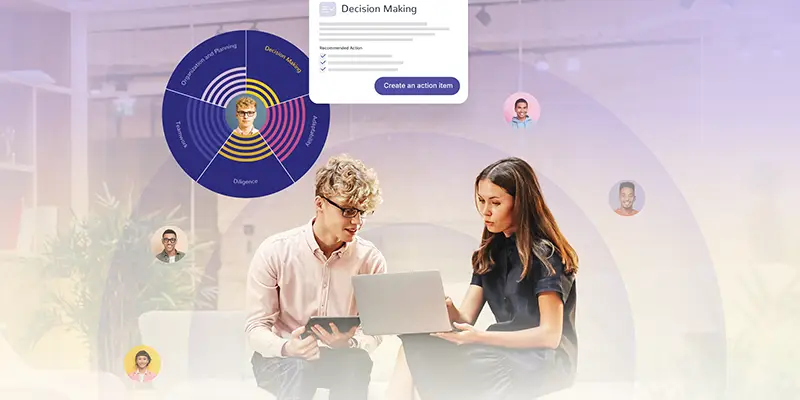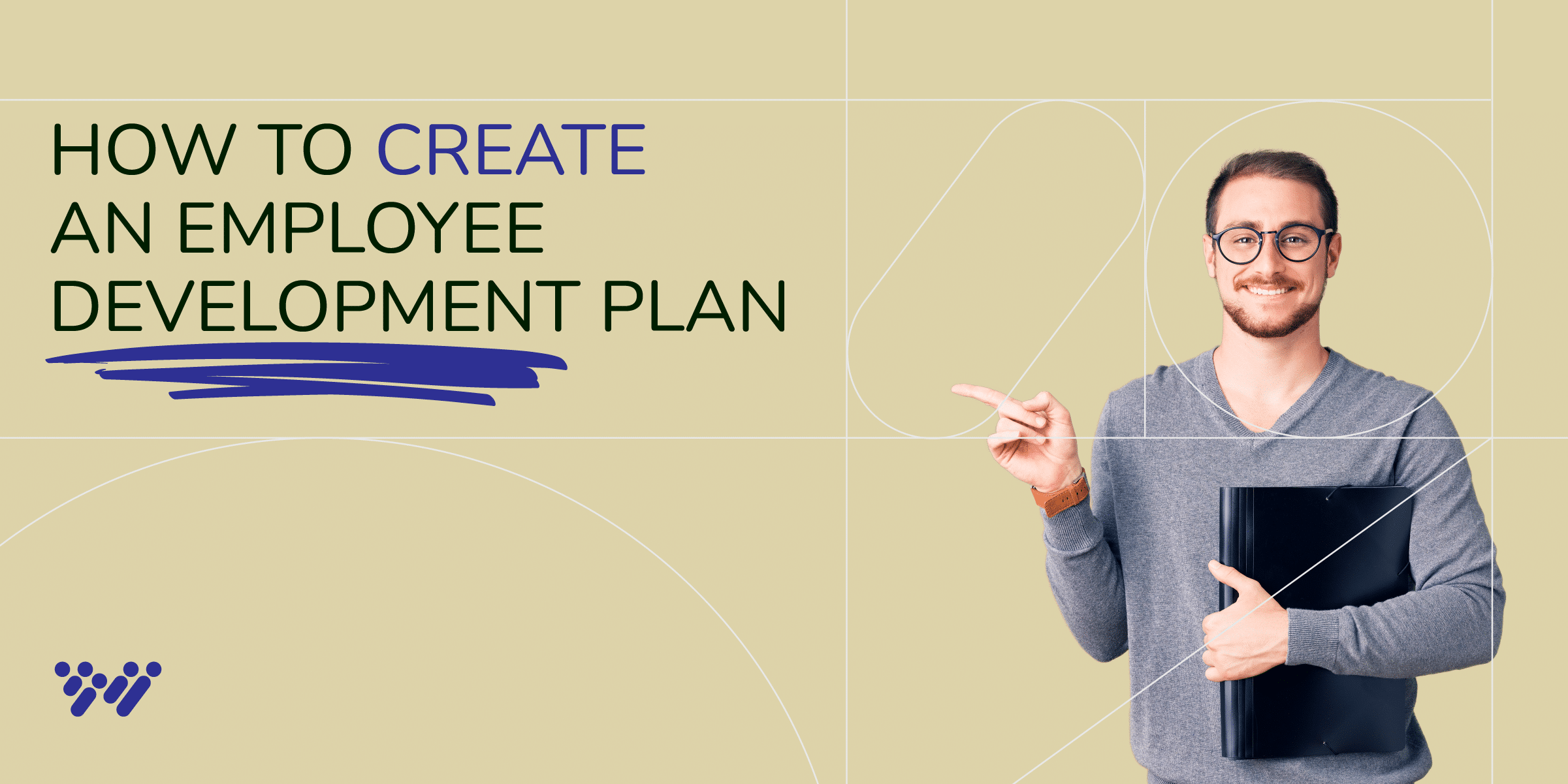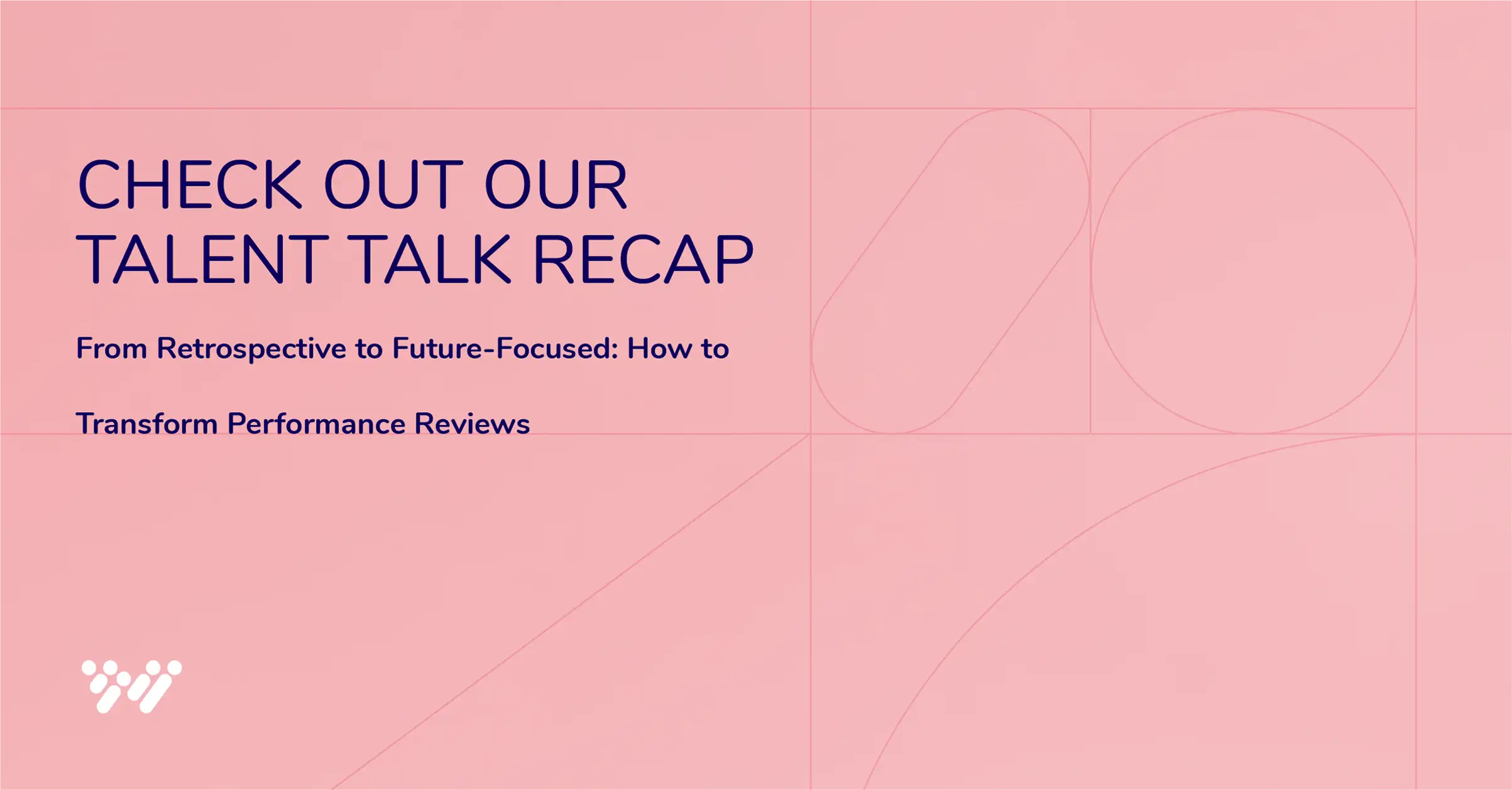It’s Monday morning. Your managers and people leaders just opened their calendars. Back-to-back meetings, urgent tasks, and a last-minute request from the C-suite make the day overwhelming before it starts.
But what if those people leaders could develop their team’s strengths and productivity, focusing on talent and team development while still conquering their daily responsibilities?
Instead of feeling like they’re drowning in tasks and running up against deadlines, they’d have the tools and strategies to balance leadership duties with workforce development.
The answer is scalable team development for leaders and employees. In this blog, you’ll learn how to drive performance and maintain high team engagement without sacrificing managers’ core responsibilities. This blog will also give you practical strategies for leadership-driven talent development and show you how to overcome common challenges that can get in the way of long-term talent development.
We’ll cover:
The challenges of leadership overload
Some 38% to over half of new leaders fail within the first 18 months. Let that sink in for a moment.
Leadership burnout is real — at every level, from team leads to directors and above.
Workloads for 71% of senior managers have increased, making it difficult for people leaders to focus on coaching and mentoring, which stunts team growth and development. Overloaded leaders face burnout, lack of focus, and lower engagement.
Managing stress while prioritizing team development for leaders can feel impossible.
What’s more, skills gaps can slow teams down, causing missed opportunities and productivity loss. When teams can’t keep up with new tech or innovations or when their team dynamics break down, performance suffers. This often results in poor communication, employee resignations, and a lack of long-term success. All these hold workforce development initiatives back.
Imagine a PR company still using outdated project management software while its competitors have switched to AI-tech tools. The team spends hours scheduling meetings that the new software would automate. Important deadlines are missed, and new customers are frustrated.
Meanwhile, talent development stalls because the team focuses on playing catch up and re-establishing relationships rather than growing and adapting to new ways of working. Top talent starts to leave for companies that prioritize talent development and up-to-date skills training over outdated practices and a lack of career growth.
Does that story sound familiar? Don’t worry, with the right strategies and technology, you can build a world-class employee development program without sacrificing your sanity.
Rethinking talent development: A leadership-centric approach
If 70% of team engagement hinges on the manager, as Gallup highlights, it’s clear that investing in leadership skills is no longer optional — it’s essential.
Great leaders do more than manage — they inspire, coach, and guide their teams to success through a process called human-centered leadership. This approach emphasizes employee well-being, development, and engagement, giving employees a sense of purpose and belonging. By prioritizing team development for leaders, organizations can boost employee growth, engagement, and performance.
Let’s look at how a human-centered, leadership-centric approach strengthens effective team dynamics and drives results.
The role of leadership in talent development
According to a 2025 People Strategy report, 68% of businesses say talent development will be at the heart of engagement strategies next year, and they’re counting on leaders at all levels to make it happen.
Great leaders and aspiring managers inspire growth and action and keep everyone moving in the same direction while building meaningful connections. They shape team culture, dynamics, and individual growth. Plus, they keep staff happy – reducing turnover and setting up a steady flow of potential future leaders to keep the organization running smoothly.
While every leader has their own personality, coaching style, strengths, and struggles, strong human-centered leadership in talent development inevitably boosts team performance, keeps employees motivated, and helps steer an organization through rocky times.
Sharing the responsibility across teams
Leaders don’t have to lead alone. When leaders share responsibility for talent development and help each other adopt tools for developing team synergy, they create a more unified, effective organization.
A well-rounded talent development strategy involves partnerships across multiple teams and includes:
- Leadership team. Sets the vision, allocates resources, and develops strategies for building effective teams.
- L&D (learning and development) team. Designs and delivers employee development resources and opportunities to support employee growth, including workshops, courses, and mentoring.
- Managers and departmental team leaders. Identifies growth opportunities, provides feedback to employees, and helps facilitate team development via self-led employee development technology or internal L&D programs.
- HR (Human Resources) team. Manages recruitment, onboarding, compliance, and employee relations while aligning with company goals and strategy. They support talent development by identifying needs and supporting people leaders in fostering team development and skill-building.
- Extended enterprise team. Often undervalued in talent development, extended enterprise teams, like board members and external stakeholders, act as a support system for leaders. Their expertise drives better decisions and innovation, like identifying tech gaps and suggesting specific trainings to improve operations.
- Employees. While not a team, their involvement is crucial. Their hands-on involvement in personal and professional development and willingness to grow makes employee development plans infinitely more effective.
Empowering employees with self-development tools
When Satya Nadella took over as Microsoft’s CEO, he prioritized teamwork, empathy, and innovation, creating a culture of continuous learning. Instead of micromanaging, he gave employees the tools, support, and autonomy they needed to grow and thrive.
Wonderlic Develop, our self-led employee development platform, gives employees the power and autonomy to catapult their careers.. Our platform helps your employees and team become more self-aware, set goals, and enhance their role-critical skills. Our development assessments highlight employees’ strengths and areas for improvement, all related to their unique roles, saving leaders time by providing a clear employee development plan and highlighting team member’s communication styles and dynamics to help them avoid conflcit and efficiently assign tasks and projects.
Most employee development solutions offer one-dimensional views around oversimplistic personality types unrelated to workm and they’re difficult to integrate into daily work. Wonderlic Develop is purposefully built to be easy to use and integrate for managers and employees.This not only helps people leaders perform and lead their teams better, but it also takes the burden off these leaders to create employee development plans, savings hours.
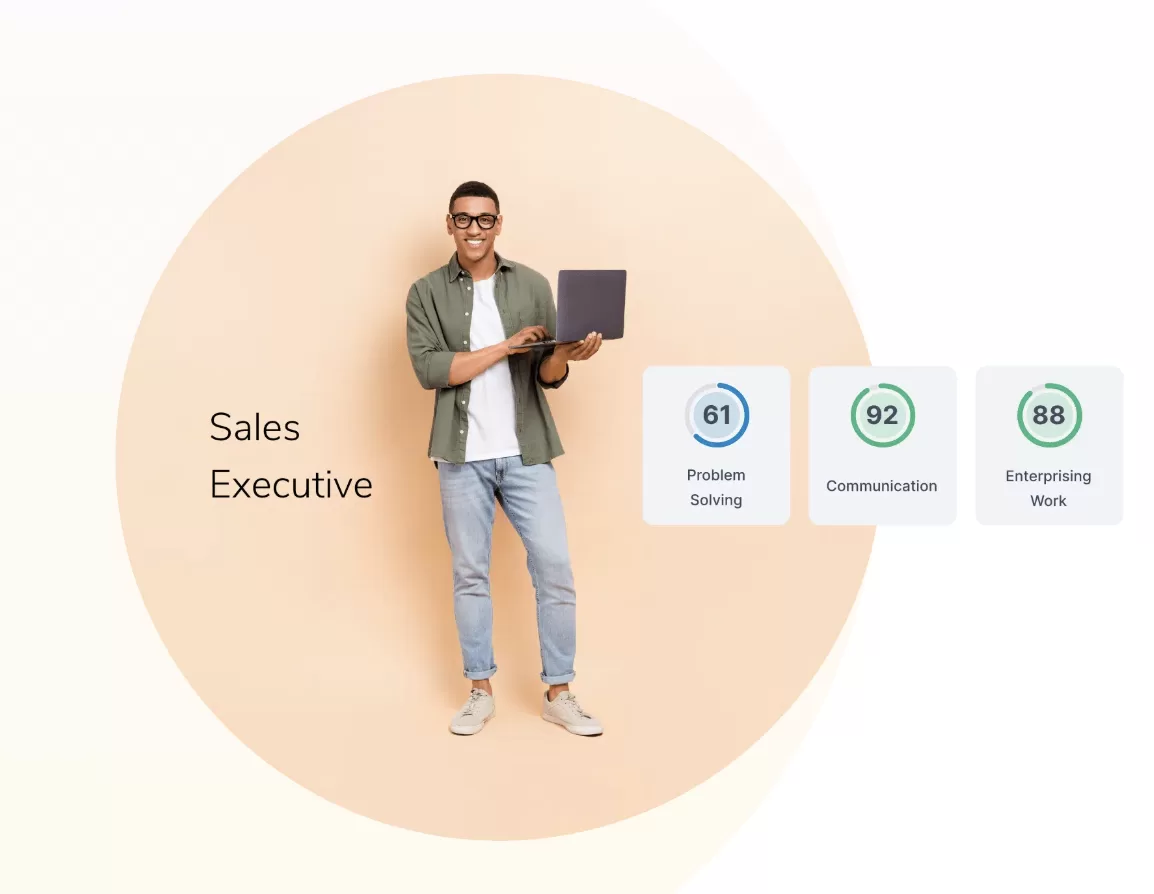
That said, even with the best self-development tools available, employees will only use them if they
1) They’re easy to use AND
2) They’re applicable to their jobs.
Overcome this by encouraging the use of self-development tools from day one. Make it clear that using the software is part of the employee’s development program. Leaders must lead by example, being accountable to the same development goals as employees. In doing so, employees will be motivated to follow suit. Practical strategies for leadership-driven talent development
Leaders at all levels have a responsibility to upskill and reskill their employees. By guiding and empowering employees to grow professionally and personally, your leaders can ensure their teams stay relevant, productive, and engaged.
Here are some strategies for building effective teams.
Developing leaders as coaches
According to Gallup, 80% of employees who received meaningful feedback within the past week are fully engaged. Coaching leaders for team development means helping them learn how to actively listen, ask insightful questions, and encourage self-reflection. This drives employee engagement and boosts individual performance and team success.
Coaching managers to develop employees build trust in your employee development plans. It helps leaders and employees overcome challenges, improving retention and productivity. Here are a few telling facts:
- 71% of employees say leadership coaching influences their decision to stay with a company
- 95% feel leadership coaching improved their performance
- 87% believe leadership coaching increased their confidence at work
Tools that strengthen team dynamics
Did you know that a lack of cohesion within teams makes them 50% less likely to meet project deadlines? This can damage your reputation, increase costs due to rework or client attrition, and stall innovation.
Wonderlic Develop Team Dynamics enhances team performance by providing insights into employees’ shared traits and unique qualities. This tool helps managers assess team development success and promote better team integration and communication, improving teamwork and productivity.
Prioritize coaching over supervision
We know leaders at all levels play an important role in helping their teams thrive professionally. In fact, helping employees develop their careers has gained traction, moving from 9th to 4th on L&D’s priority list.
Yet, the constant tug-of-war between handling immediate tasks and investing in talent development means leaders are pulled in multiple directions, trying to solve urgent priorities while also needing to focus on building a strong, sustainable team for the future.
The biggest challenge I’ve seen is the constant tension between short-term priorities and long-term team growth. Leaders often feel pulled in different directions, especially in a fast-moving industry like marketing.
Nirav Chheda, Co-Founder and CEO at Bambi NEMT
When leaders prioritize coaching over supervising day-to-day operations, employees can set their own goals, reflect on challenges, and work out how to solve problems independently.
Fact: Leaders who shift from overseeing tasks to coaching team members see long-term growth. It’s no wonder that almost half (47%) of companies are investing in career mentoring and coaching to boost employee retention and long-term growth.
Nirav Chheda says, “To address [the constant tension], I’ve encouraged our leaders to embrace ‘small wins’ in development. It doesn’t always have to be about grand training programs — sometimes, a 15-minute conversation to share feedback or a quick reflection after a project can be just as impactful. These moments build momentum without overwhelming anyone.”
Focus on high-impact leadership activities
For leaders, working out which tasks to prioritize and what can wait isn’t always easy. With limited time and resources, it’s challenging to know where to direct efforts to maximize value. Leaders who focus on high-impact activities by helping individuals and teams unlock their full potential can help delegate work and reduce some of the workload.
With Wonderlic Develop, employee development plans are tailored to each employee’s strengths and areas for improvement, such as teamwork, adaptability, and effort. This reduces the need for leaders to create individual employee development plans and gives your people more control over their growth and career paths.
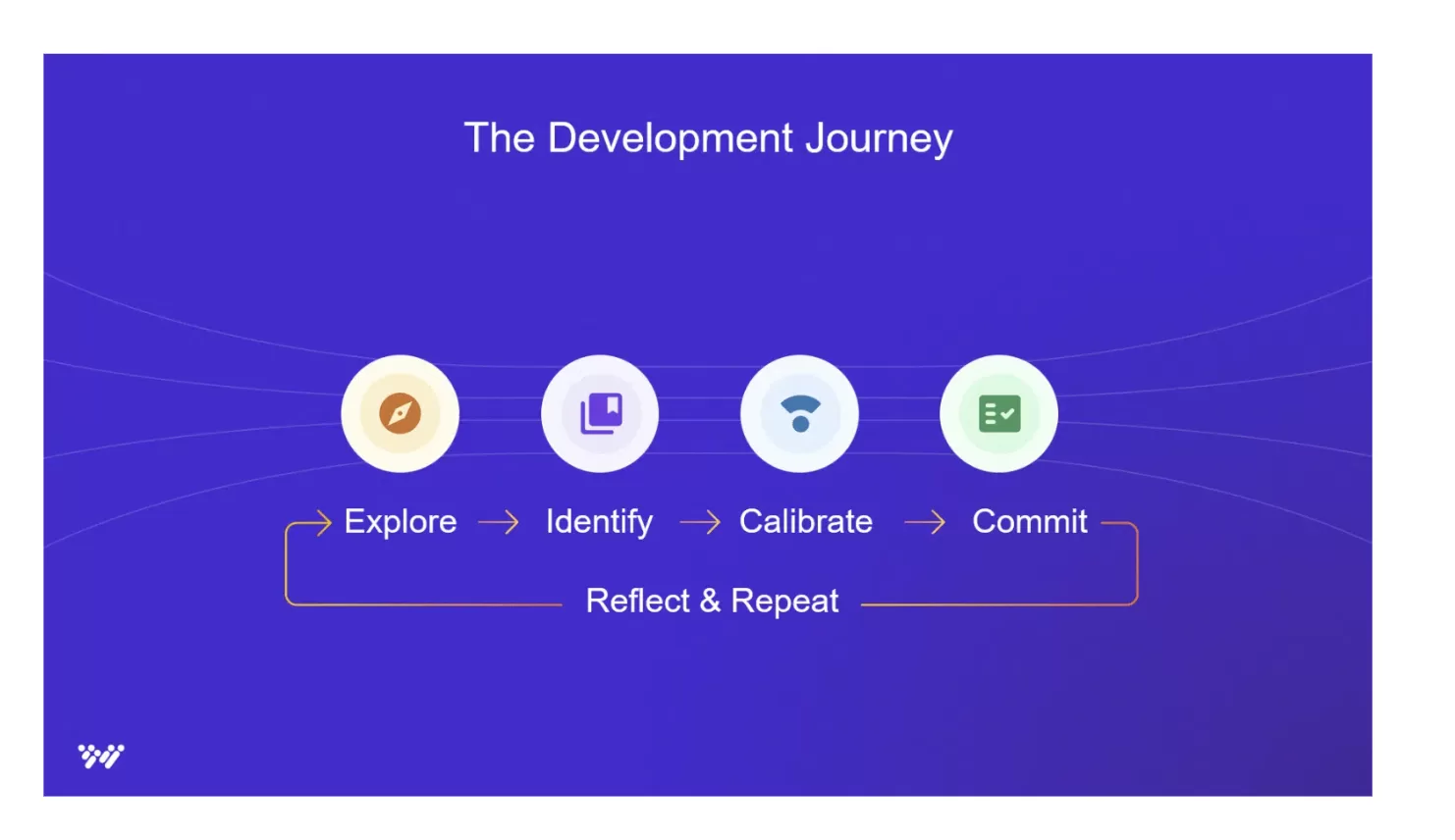
Overcoming common challenges in leadership development
Of course, every initiative has its challenges. Here are some of the toughest in leadership development and how to overcome them.
Measuring leadership and team development success
Many leaders face obstacles due to data accuracy and lacking the right analytics tools. This makes tracking leadership growth and team performance like driving a car while blindfolded.
When leaders don’t dig into the details, such as performance differences between teams or how well certain training systems work, they can end up with lackluster results. For instance, a leader may look at surveys and see a slight improvement in time-to-competency rates. Doing this leads to decisions that don’t fix the core problems, like gaps in teamwork.
Track leadership growth and employee development progress with solid data. Wonderlic Develop helps teams and individuals take ownership of their growth with analytics pinpointing key areas to improve.
With actionable recommendations from day one and time-tracked milestones, your employees can focus on reaching their career goals while enhancing job performance.
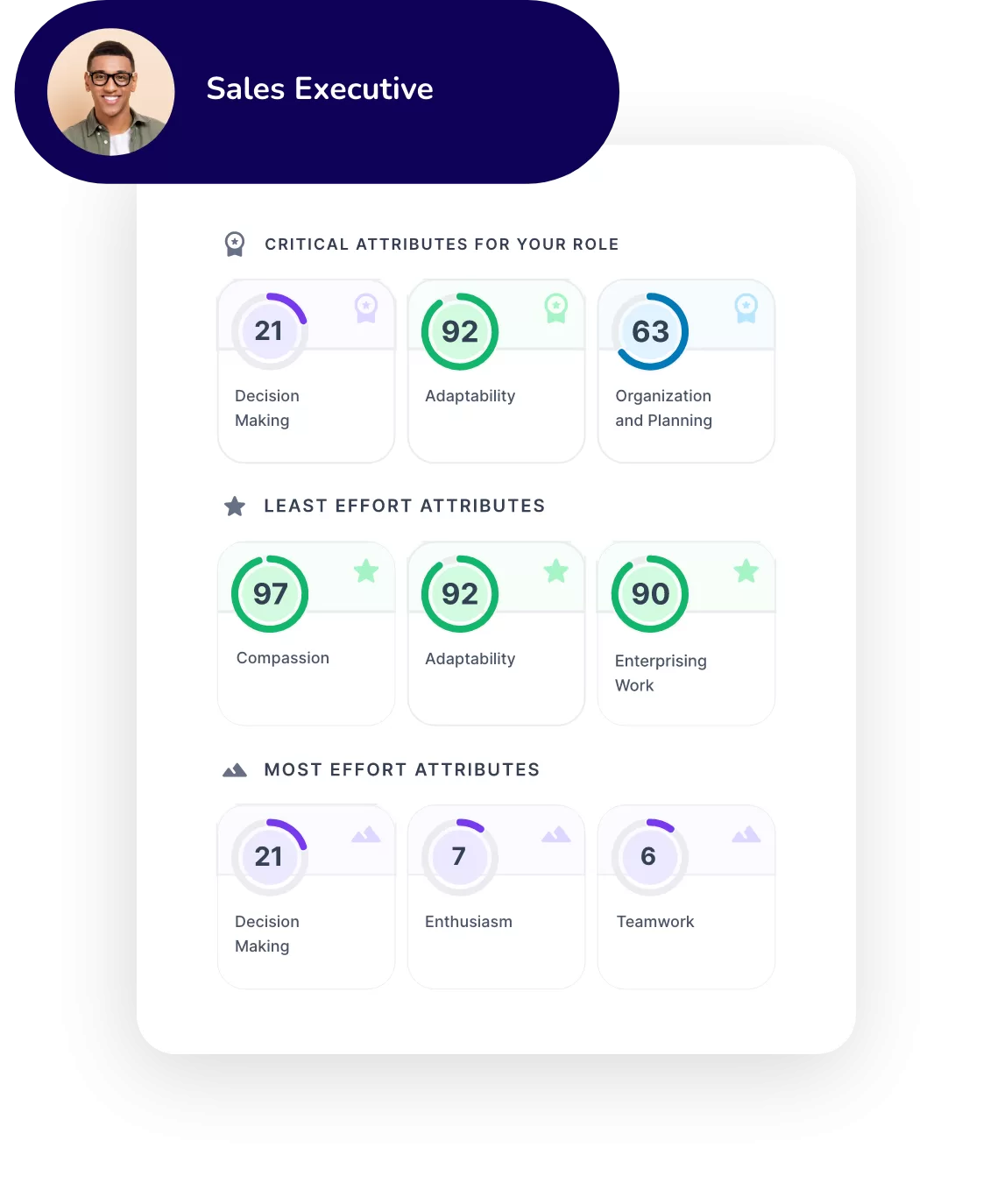
Boost Employee Performance with Role-Based Development
Resistance to leadership initiatives
Resistance to leadership initiatives is pretty common when organizations try to shake things up, especially when changing employee development strategies. It can come from an organizational level, like poor management, or from an individual, such as employees being resistant to change.
For an organization, it may be that the changes don’t align with the bigger picture or that people fear change. On an individual level, people can resist because they’re comfortable with the old ways or worried they won’t be able to keep up.
To tackle this, leaders must clearly communicate why changes are happening and how they benefit everyone. Getting employees — including leaders who will undergo development training — involved in the process and offering the proper support and training can make the transition smoother. Introducing changes gradually and highlighting early wins can turn resistance into acceptance over time.
Optimizing limited resources for leaders
Lily Wang, HR Director at Srlon, says, “The biggest obstacle I’ve observed is the ‘urgency trap’ – when immediate tasks consistently take precedence over development activities.”
Leaders like Lily often juggle team priorities with other responsibilities. Striking a balance and ensuring their teams have the right tools and support to succeed can lighten the load and create more space for growth-focused initiatives.
Even so, KPMG found that 37% of companies struggle with technical issues, such as incompatible systems. This makes it hard to prioritize tasks and share important information. A lack of smooth communication can affect teamwork, as employees need easy access to information to collaborate effectively and perform at their best.
Make the most of what’s available, especially when time, tools, or support systems are in short supply. When data flows smoothly between platforms, like syncing your HRIS (human resources information system) with Wonderlic’s assessments, leaders get a clearer picture of their employees. This makes leadership-driven talent development more manageable and efficient, helping you make smarter, data-driven decisions.
The role of Wonderlic in leadership-driven talent development
Wonderlic has a range of leadership tools for team collaboration, uncovering hidden potential, and assessing individual and team performance. These include:
- Cognitive ability tests to measure problem-solving, reasoning, and learning potential
- Personality assessments to help leaders understand individual personality traits and cultural fit
- Motivation assessments to make sure employees are inspired and energized by their current and future roles
Together, these tests give you a comprehensive view of employees that help you quickly identify high-performing employees. And because Wonderlic Develop helps every employee grow and focus on what’s most important for their roles and career, you can build an even bigger bench of high performers — and potential future leaders. Wonderlic tests are an accurate measure of how a person will perform. If you aren’t using psychological testing for hiring, you don’t know who you are going to get.
David Rice, Savannah Luggage Works, VP of Operations
In addition, Wonderlic Team Dynamics, part of Wonderlic Develop, helps improve teamwork at every level of the organization. Elevating individual and team performance will, by default, elevate organizational performance. More cohesive teams get more work done. They engage in healthy conflict and can have meaningful discussions about different points of view, leading to optimal outcomes.
This guided communication creates psychological safety where employees and teams feel heard, valued, and understood. By understanding employees’ goals and strengths, leaders can also effectively pair employees with projects that match their goals and the organization’s, leading to better alignment. All of these things help boost engagement and retention, leading to better outcomes and lower costs.
Empowering leaders to drive team and organizational growth
Wonderlic helps organizations hire and nurture top talent in a way that goes beyond surface-level training programs.
With tools to assess critical things like cognitive ability, fulfillment, and emotional intelligence, leaders gain valuable insights into how to grow — as do their team members. This helps people leaders spot resistance early, guide transitions smoothly, and build a resilient, adaptable workplace where navigating change is guided by data and facilitated by employees performing at their best.
Get a free demo of Wonderlic today
Looking to empower your people leaders? Get started with a demo of Wonderlic.
FAQs
Leaders at all levels juggle heavy workloads, competing priorities, and limited time, making it tough to focus on talent development. Without proper training or tools, workforce development is often sidelined in favor of urgent business needs.
Leadership is crucial when it comes to shaping team dynamics and employee growth. Leaders who take on a coaching mindset can inspire teamwork, aligning goals with the bigger picture. They create a culture where continuous learning thrives, and by leading through example and keeping communication open, they set the stage for teams to perform at their best.
Managers can ease their workload by delegating tasks, using technology to automate processes, and focusing on high-impact development activities. Shifting from supervising to coaching and encouraging employees to use self-development tools lightens the load on people leaders and helps build a proactive, growth-focused culture.
Managers can overcome resistance by shifting from supervising everything to coaching employees to complete tasks themselves while encouraging them to use self-development tools to improve their performance. This eases their workload and builds a reflective, growth-focused culture.
Technology is a game-changer for leadership-driven team development. Tools like Wonderlic Develop Team Dynamics help managers keep tabs on team progress, spot strengths, and back continuous growth. Our platform simplifies workflows, boosts teamwork, and allows managers to focus more on coaching instead of getting bogged down with administrative tasks.




